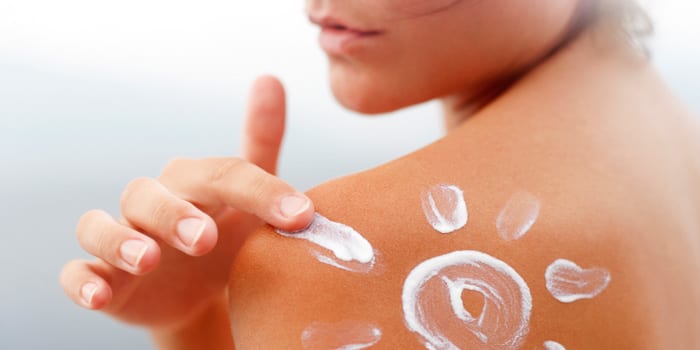Follow These Tips to Prevent Sunburn

Summer is the time to get outdoors and enjoy everything the season has to offer.
As a kid, growing up in the Midwest, summers were always my favorite. And it wasn’t just because school was out. Sure, some days could be unbearably hot and humid, but there was nothing better than spending hours on a blanket reading in the grassy backyard (or on the roof—sorry Mom and Dad), running after fireflies, or, on those particularly sticky days, heading inside to play Final Fantasy VII and see if I could finally breed a Gold Chocobo.
Now that I live in Southern California, summer means the beach. But last year, I was reckless. One weekend, a friend and I laid out on the beach in Venice. We drank plenty of water and ate fruit to stay hydrated. She applied sunscreen. I put it on my face and wore a hat, but that was all.
About two hours in, I was starting to feel a little…warm. So, I sprayed on the sunscreen and laid back down. As we were leaving, she mentioned the back of my legs looked red.
The following day, I couldn’t walk. My legs were swollen and putting any pressure on them was excruciating. If I had to move from one room to the next, I used the bookcases and moldings to support myself. Even a week later, I could sit, but everything still ached.
But, we can both learn from my mistake, so please read on.
How to Prevent a Sunburn:
Put on sunscreen before you go outside
Every day, about 30 minutes before stepping out, apply 1 ounce (2 tablespoons) of broad spectrum SPF of at least 30. Sun damage to the skin is caused by two types of rays: UVA and UVB. UVB rays are the primary cause of sunburn, but they each play a role in skin-aging and increasing your risk of skin cancer, so you want to protect yourself against both. Standard SPF (sun protection factor) blocks only UVB rays. Broad (or multi-spectrum) sunscreen protects against both.
Understand your sunscreen’s limits
When it comes to sunscreen, the higher the SPF the better, right? Eh. SPF 15 blocks approximately 93% of UVB rays. SPF 30 blocks 97% and SPF 45 blocks 98%. Higher isn’t necessarily better, so don’t be lulled into a false sense of security that SPF 100 is going to protect you all day.
Reapply often
Reapply your sunscreen every two hours. And, don’t skimp on it. Use the same amount – at least 1 ounce – every time you do. Less than that and you’re not getting the full protection it offers. Reapply immediately after swimming, sweating a lot, or toweling off. Water-resistant sunscreen is effective for 40 minutes in the water. Very water resistant is effective for 80 minutes of swimming. There is no such thing as truly waterproof or sweatproof sunscreen.
Don’t keep your sunscreen forever
Use your sunscreen daily, year-round, even on grey days as the UVA and UVB rays are still hitting your skin, but don’t keep it beyond the expiration date. It starts to degrade and become less effective.
Cover up and avoid the sunniest part of the day
I realize that avoiding the hours between 10 AM and 4 PM, and wearing a hat, sunglasses, and tightly-knit dark long-sleeved shirts and pants every summer day is not a reasonable request. But, it is what the CDC recommends. At the very least, limit your sun exposure during those hours, wear a hat and UV protective sunglasses, and be mindful about wearing sunscreen.
Here’s a quick recap:
• Get a broad spectrum sunscreen of at least SPF 30
• Put 1 ounce (2 tablespoons) of sunscreen on 30 minutes before going outdoors
• Reapply the same amount of sunscreen every two hours
• Try to avoid the hours between 10-4 and cover up as much as possible
• Practice year-round sun protection
